Newfoundland: Keeper of Stories in Stone
Known as “the Rock”, Newfoundland is world-renowned for its ancient stories in stone. To pass it off as a single lump sitting in the Atlantic Ocean off the coast of Canada’s Maritime Provinces is at best short-sighted. Its geology, illustrates the concept of plate tectonics. This concept describes how the earth has moved and evolved over hundreds of millions of years, one of the most important ideas in modern science. Newfoundland is raw, rugged, and much of it untouched. This is what I wanted to see, not the settlements arising from colonial attempts to tame it.
Some reasons for traveling there this summer were ordinary enough. It was the only province I hadn’t been to and I’d wanted to visit it for a few years. This was my chance before university studies usurp extended vacation for a while. Also, a Horizons Unlimited gathering of overland adventure travelers, most of them on motorcycles, was happening while I’d be there. I could meet up with friends from the moto community. Underlying all that was an inexplicable draw to a place where I could be with nature that was as it had been for eons. I wanted to sense and absorb that energy, like a heat sink. You can’t help it when you’re open to it.
So many times awe overcame me and left me speechless. These locations, moving from west to east, are only four that left me in awe. There are many more.
Stories in Stone at Green Point
It’s impossible to describe the feeling of walking along an oceanside trail through grasslands on the west coast in Gros Morne National Park. A small path descends to the rocky shoreline and another time. Suddenly you’re following sequences of layered rocks along the seaside cliffs. Formed almost 500 million years ago they were once the bottom of an ancient ocean and part of a continent called Laurentia. Scientists come from all over the world to study fossils here which mark the boundary between the Cambrian and Ordovician periods.
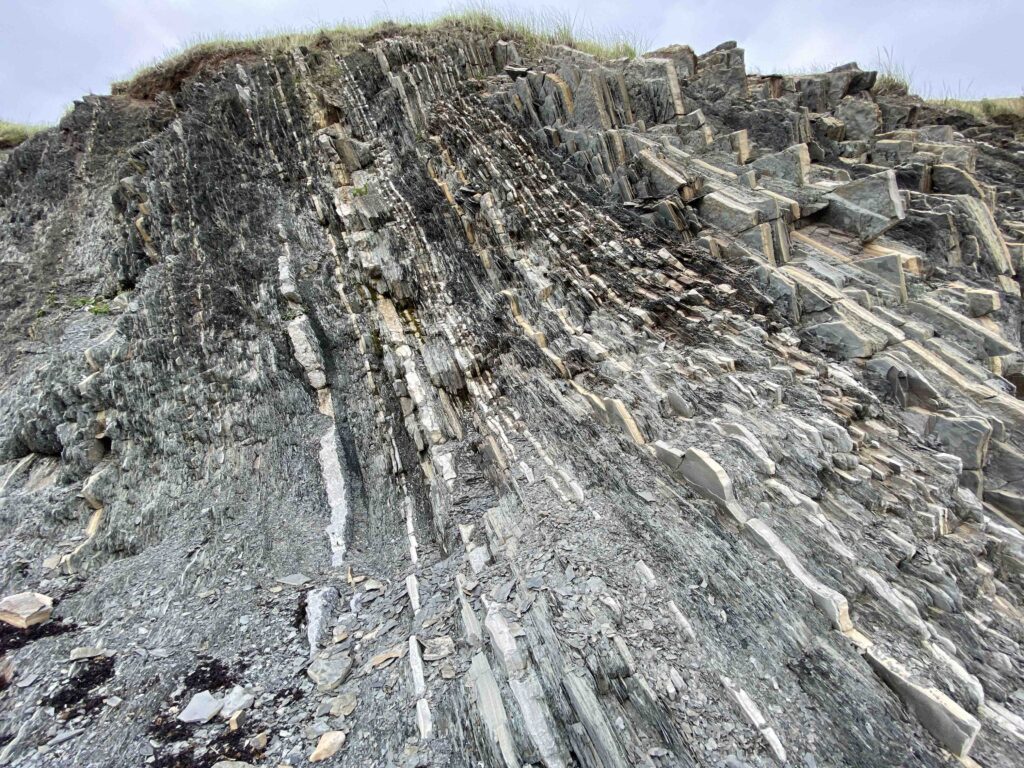
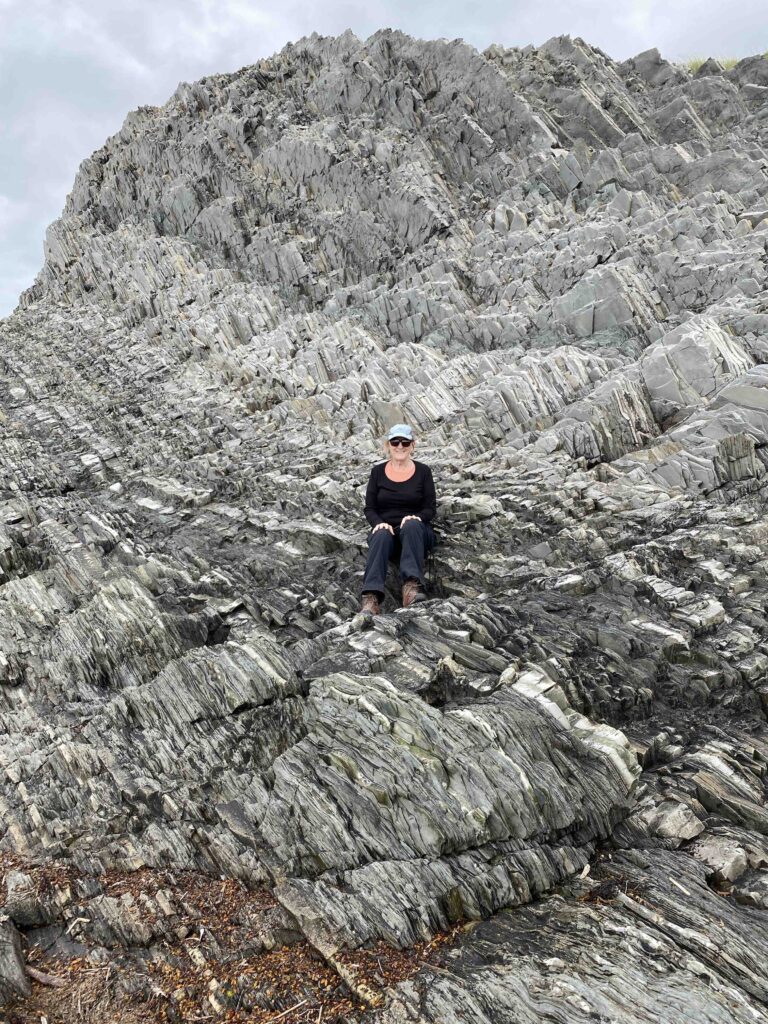
I returned three times and sat on these ancient rocks, closed my eyes, and listened. These layers were once horizontal before tremendous forces buckled them into a serpentine formation. They extend well under the ocean and along the coast, buried under the topsoil but here exposed. I’m in a place of timelessness, creation, and power. This scene could have existed hundreds of millions of years ago. It tells me of the power of creation, the connection I, we, have to all creation, before it’s covered by whatever we cover it with – whether they’re stories, buildings, or tarmac. It’s real and raw and continues. I’m remembering who I am and what’s important.
Port au Choix
Visiting Port au Choix was like stepping into the present, relatively speaking. Five ancient cultures lived on this crossroads where 6,000 years of human history crossed paths. The trails I walked were the same as those used by the Maritime Archaic people, the Dorset people, the Groswater people, and the recent Indigenous people who lived here long before Europeans.
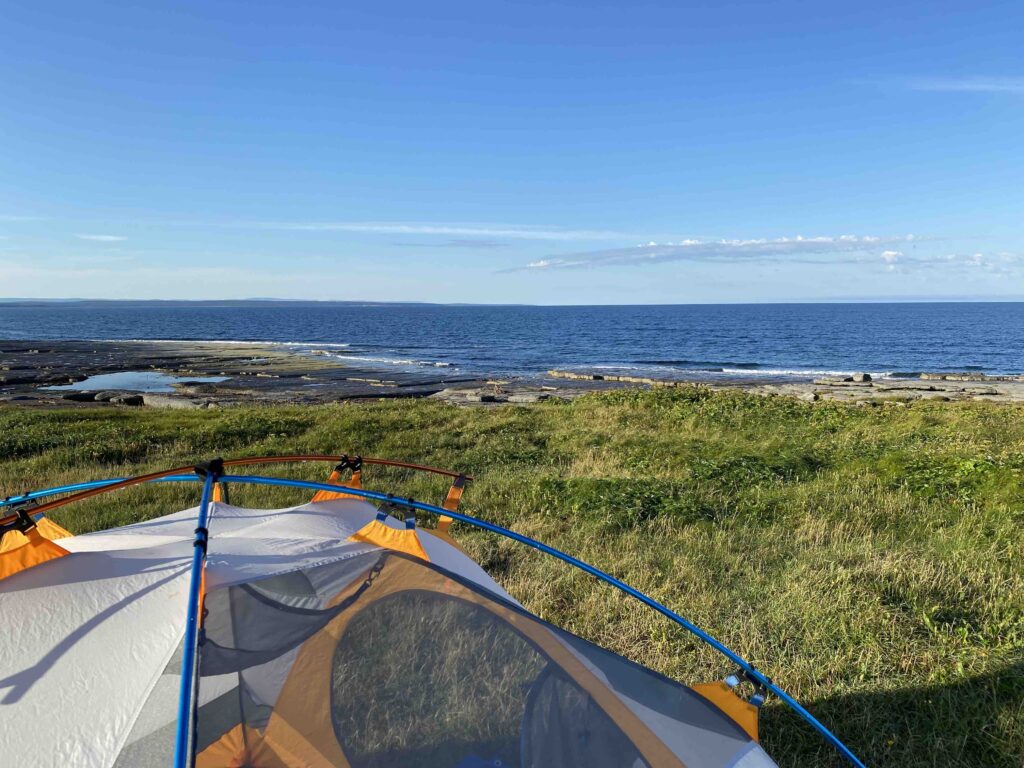
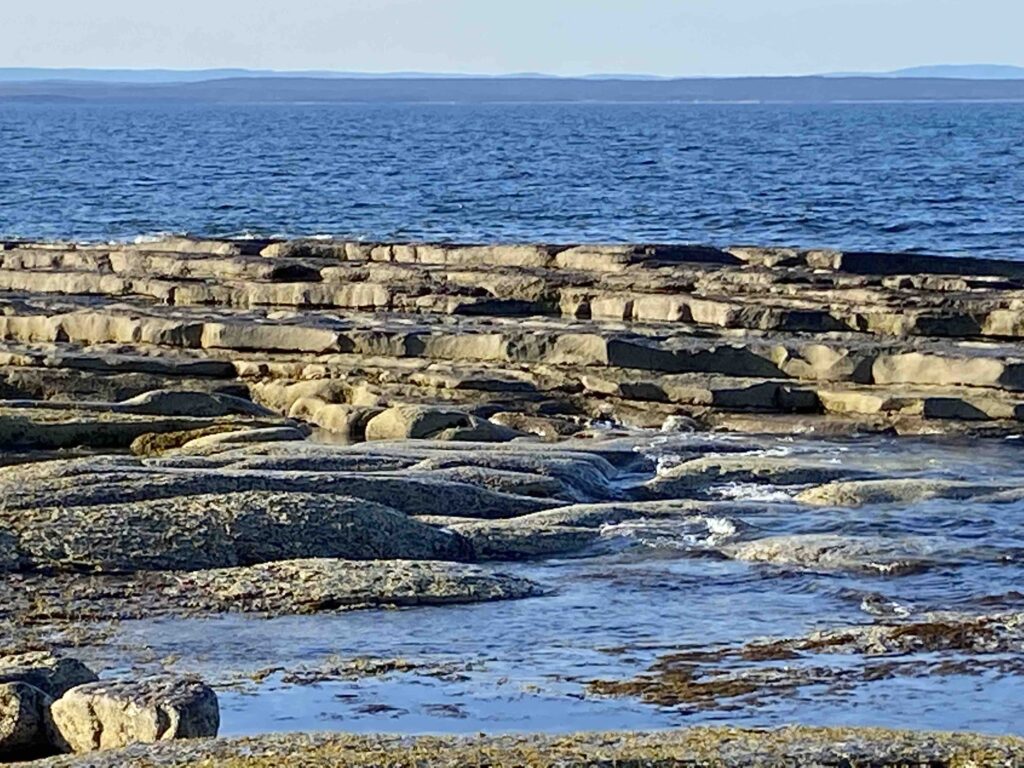
I didn’t see any caribou but fresh scat and tracks marked their presence. Mounds identified where living quarters had been. Like them, we too are transient on this earth and the earth continues without us, but not before we leave our mark. What is our legacy, I wondered.
Stories in Stones of Tablelands
This spectacular formation further inland, also in Gros Morne, (and very close to our Horizons Unlimited event) was half a billion years in the making. What you now walk, hike, and climb on was formed deep in the middle layer of the Earth, the Mantle, until it was thrust up as ancient continents collided. It’s mind-blowing! So began the building of the Appalachian Mountains.
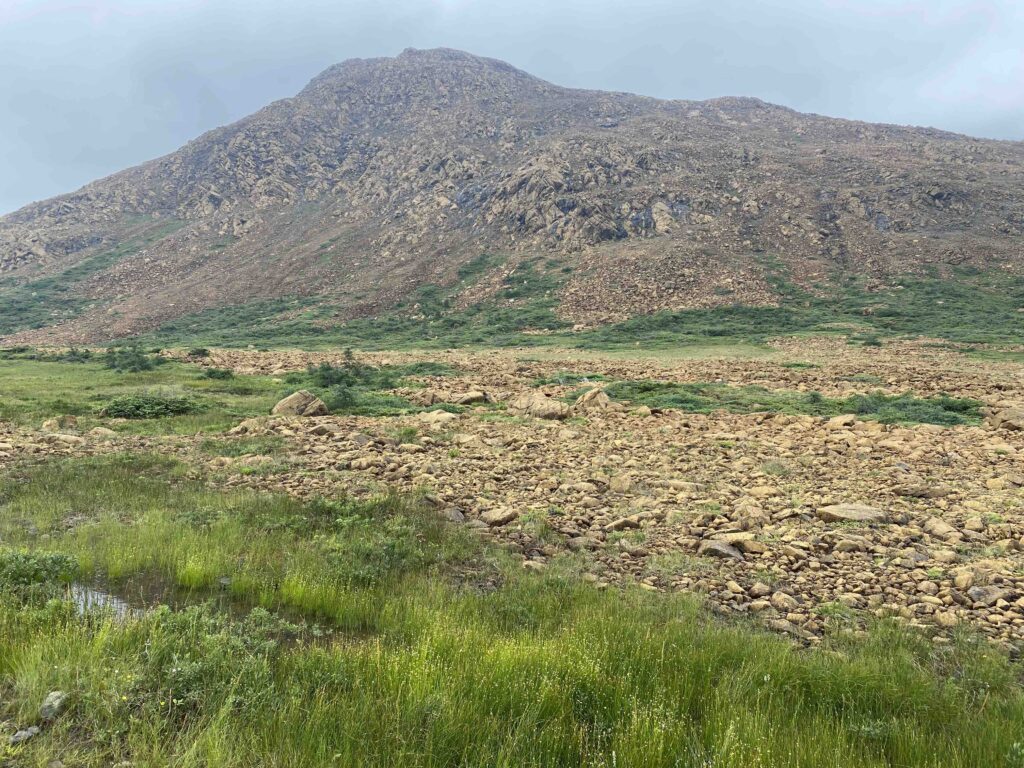
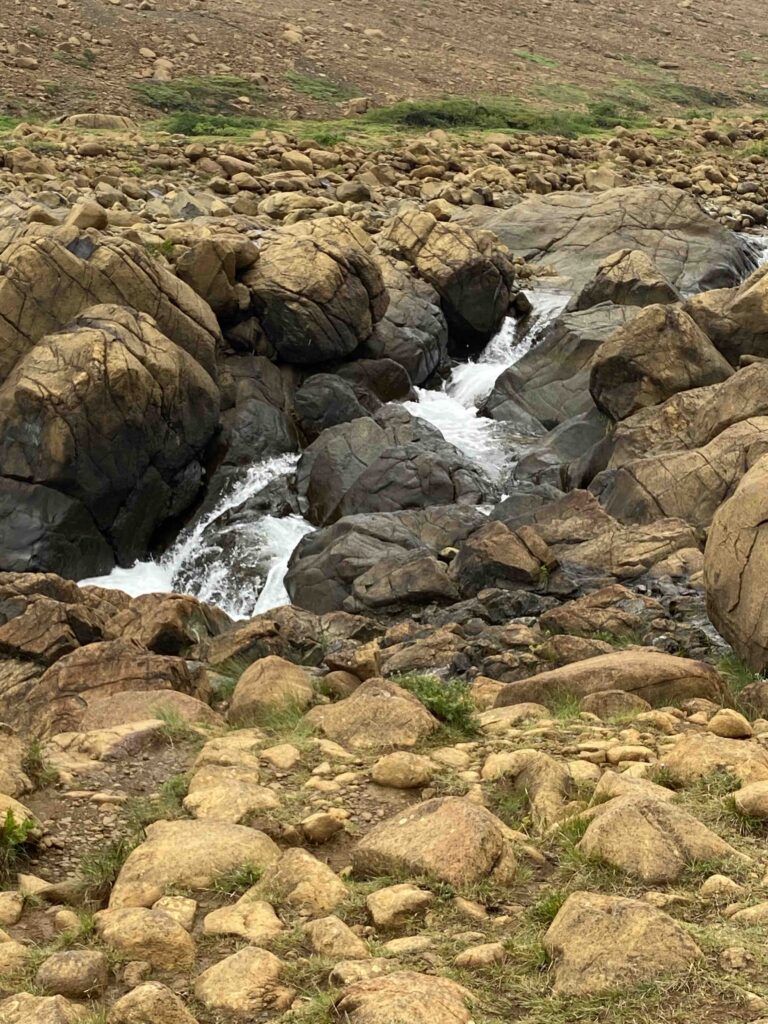
More than 400 million years of erosion revealed the surreal barren, orange landscape we see today. It’s normally found far below the earth’s crust. Most of the rocks are periodotite, dense with iron, magnesium, nickel, cobalt, and chromium. They’re poisonous to many plants so don’t support the growth of vegetation. After all, usually found eight to fourteen kilometers under the earth’s crust, they weren’t meant to!
Stories in Stones at Mistaken Point Ecological Reserve
This site at the southeastern tip of the Avalon Peninsula extends along seventeen kilometers of coastline. The fossils here, known as the Ediacara biota, lived from 580 to 541 million years ago, when all life was in the sea. The Reserve is the best place in the world where you can view a 565-million-year-old sea floor that accurately preserves the ecology of these ancient deep sea communities.
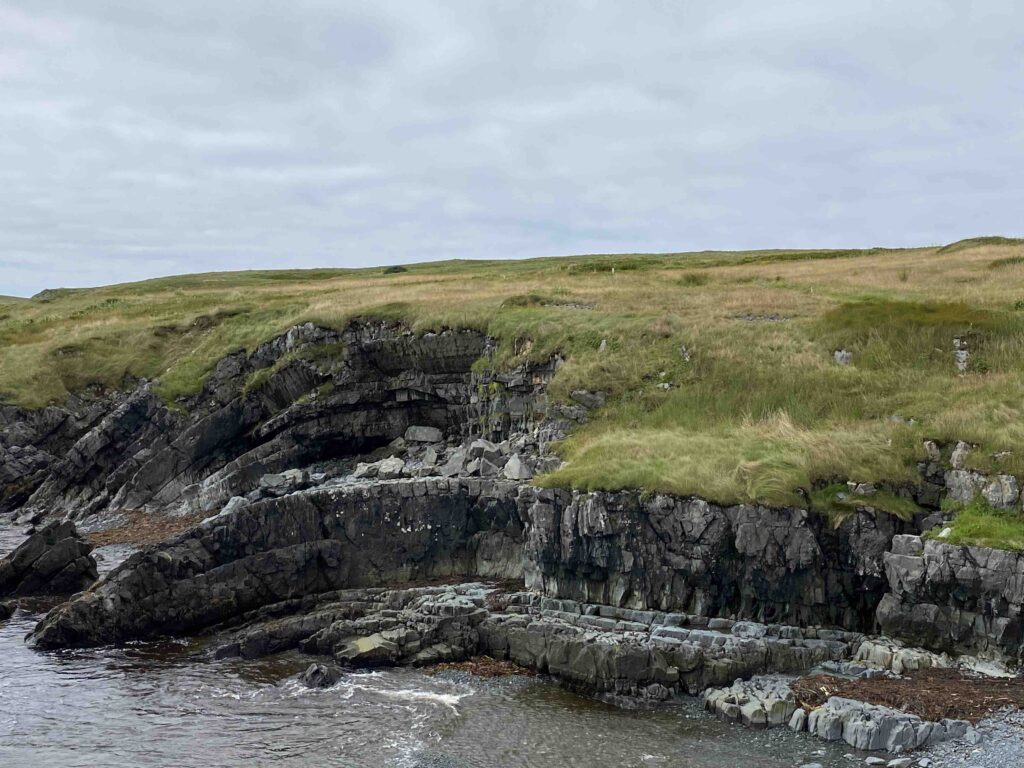
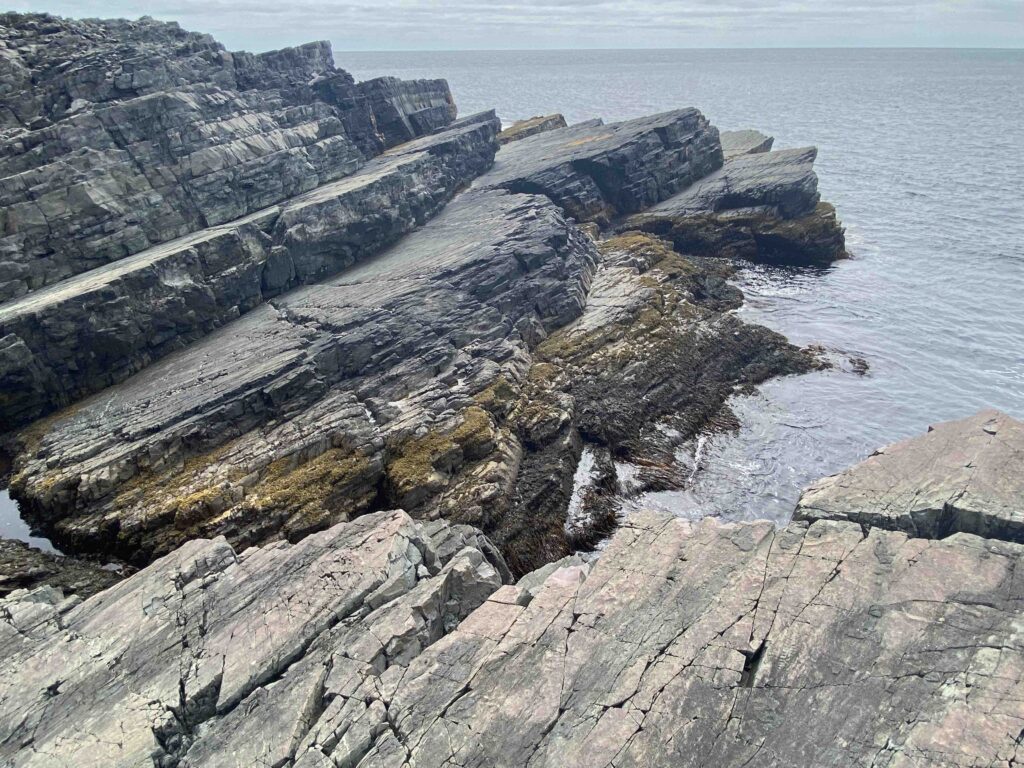

They lived well below where waves or light could reach them and have been preserved in place on the muddy sea floor. Over time, massive tectonic movements have brought them here, thrust them out of the water, and left them for children to play on. They’re another trip into timelessness.
Mistaken Point Ecological Reserve
Everyone I know who has traveled in Newfoundland has been captivated by her beauty and the people who live here. All have run out of time before experiences. Knowing I too would be captivated and that my intention was to immerse myself in the ancient stories in stone, I limited myself to those places to get the maximum experience. Even then, there was so much more to hear.
Visiting those sites is like entering a time machine where you remember who you are, what’s important, and how powerful Creation is. It’s a time of recalibration that brings a message of resilience, hope, and gratitude.
And because I couldn’t get enough of the stories in stone, here’s one more picture—The Chimney at Spillar’s Cove on the east coast, shaped by wind, water, and earth over eons.
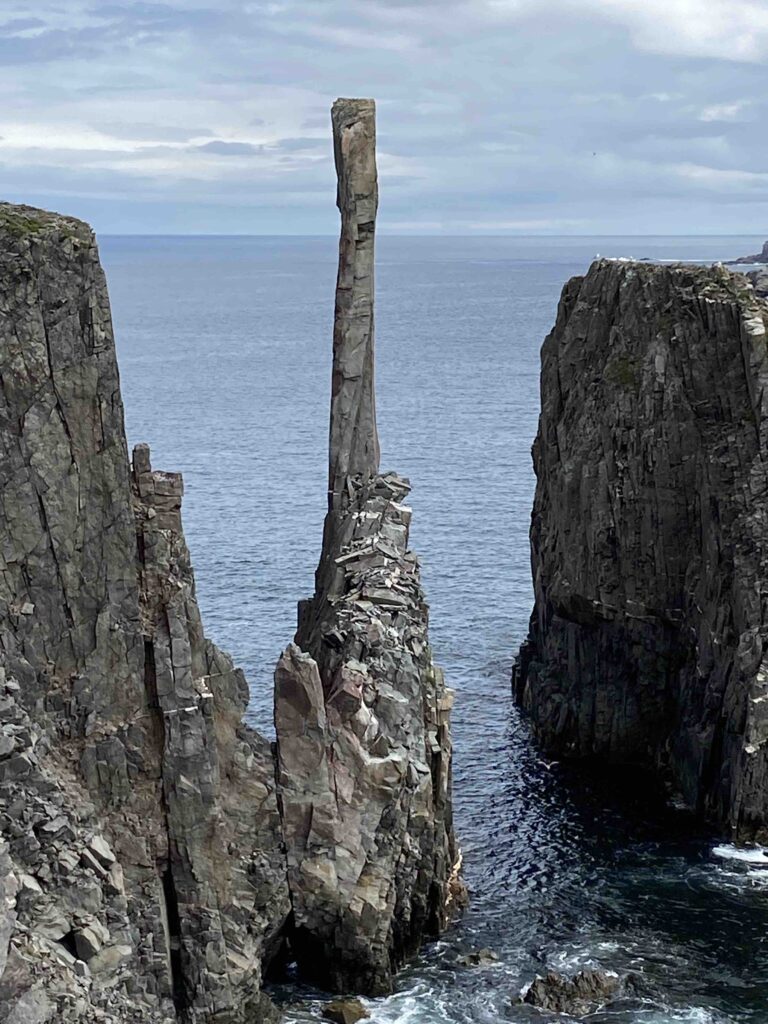

I am in awe of those pictures! Still on my bucket list. Thank you so much, Liz.
Now back to studying, eh?
Hi Carola – You’ve got some ideas for when you go. I was blown-away!! Studying starts Thursday. 🙂 Orientation classes this week. Easing into it…..:)
Oh Liz, your essay is just so timely. I have lost my life partner and feeling very down. In reading your words, I have rethought about the whole question of ” being” . The billions of years, explained so well by this article, to create the wonderful sites you’ve explored helps me be so thankful for the “infinitesimal” moment in time that Derek & I had together and the chances of that ever happening in the first place. 35 years in what …billions!!!????
Thank you so much,
Sue in Meaford.
My thanks to you Sue. Keeping you in my thoughts.
Such evocative writing, Liz. I am envious of your talent. You capture some of the many reasons I’ve been going to Newfoundland for 36 years now, and will be going back again. Well done!
And it was wonderful to see you and other friends at the HU gathering. It’s been too long.
Way too long Steve. It was wonderful to see you again Steve.
I knew Newfoundland would captivate me. I had no idea of the scale.